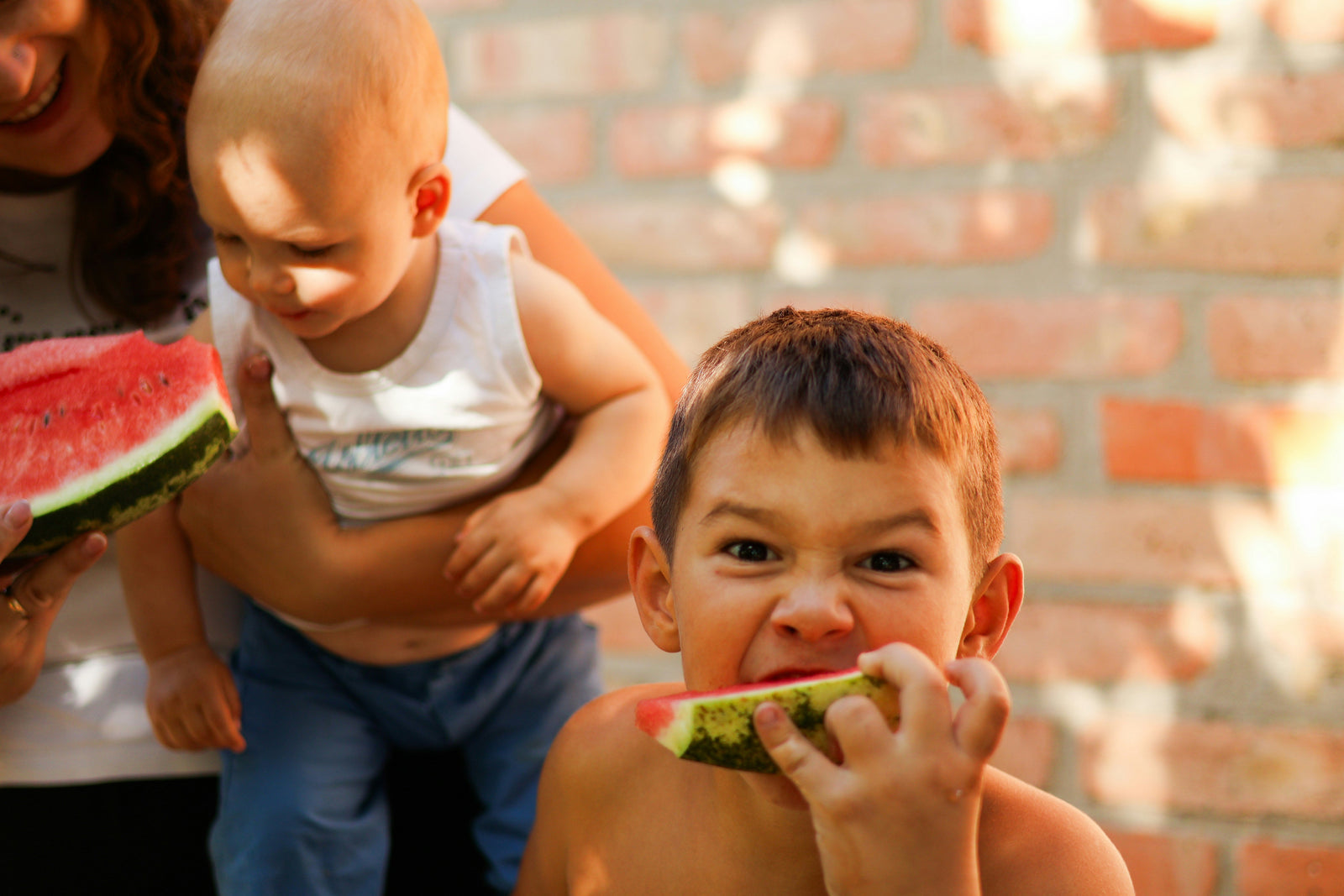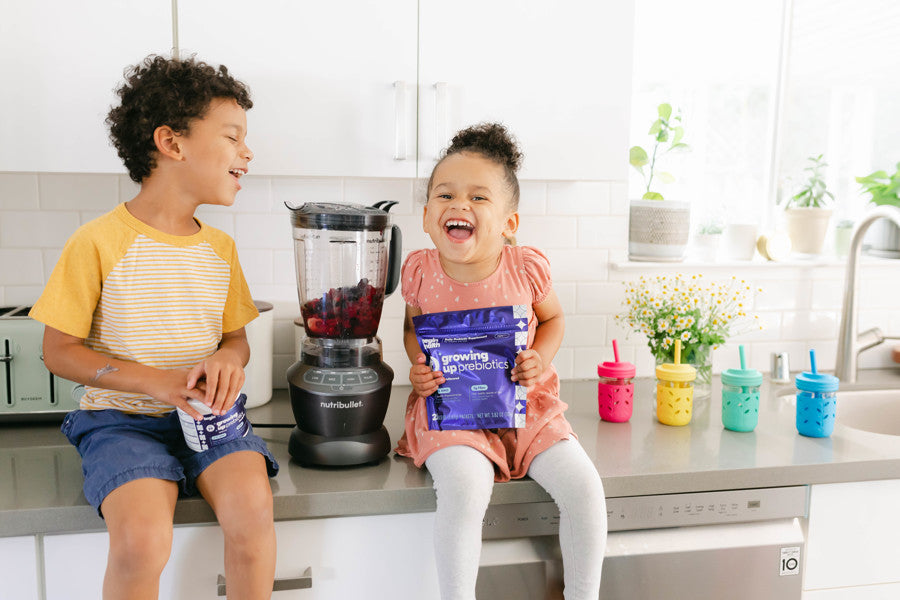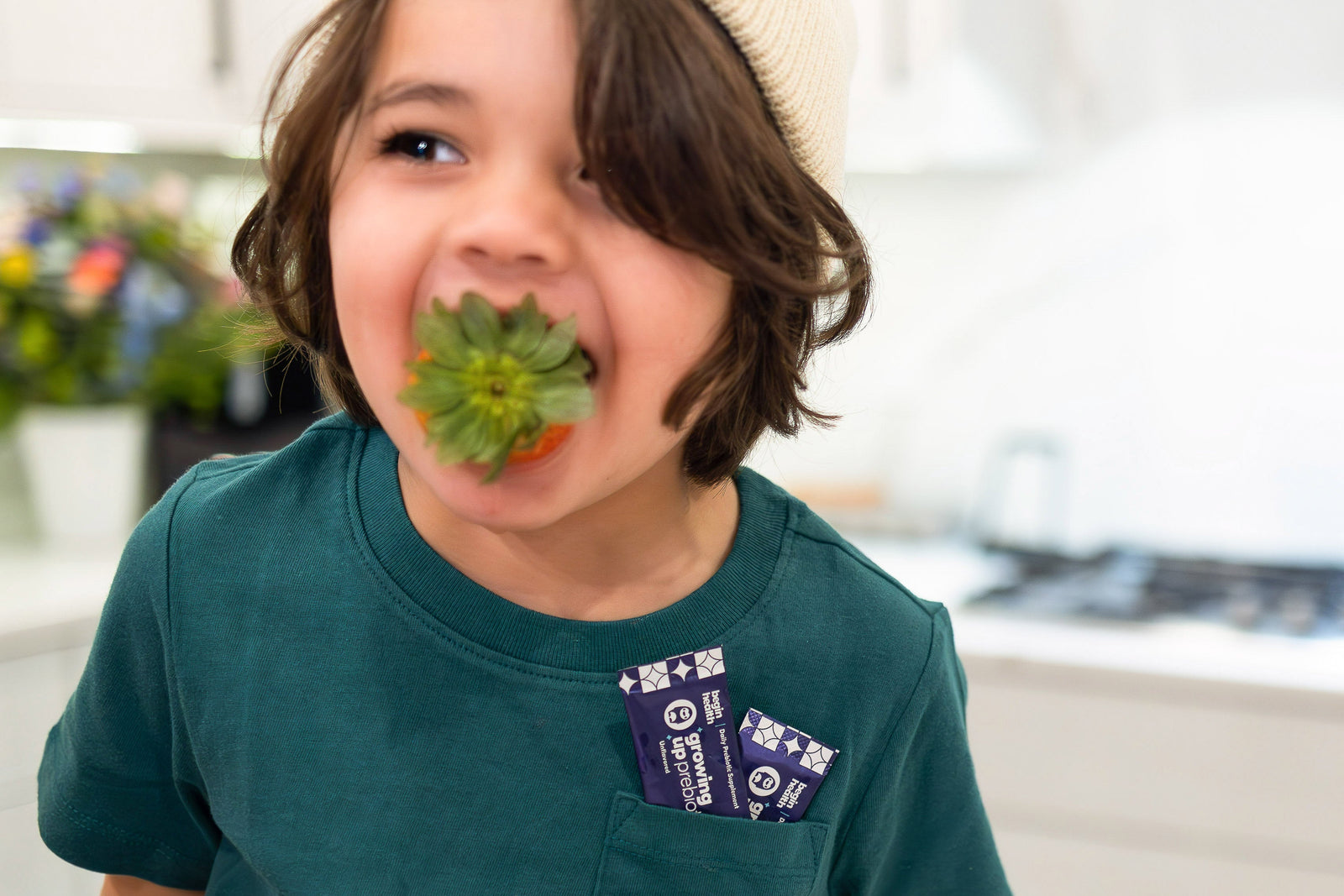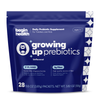Your Cart is Empty
Continue shoppingPost-Laxative Cleanse Protocol for Kids
Expert reviewed by Lauren Mahesri, RDN | Published December 12, 2024
share this article

Your family pediatrician or GI doctor might have prescribed your kiddo a laxative regimen to help clear out their system. But now what? What should your kid do to prevent this from happening again?
Chronic constipation is incredibly common, and can result in painful abdominal cramps and bloating. Especially if the stool becomes hard and compact, a laxative is often prescribed to clear the pathway.
However, laxative dependence is also quite common because there is often no regimen or protocol recommended after the laxative has done its job. So let's review simple and effective strategies to wean your kiddo off laxatives and get their poop schedule back on track.
Understanding Laxatives
There are several types of laxatives used for kids (1). Knowing the difference can help you address your little one’s specific needs and wean them off laxative use for good.
- Osmotic laxatives, like polyethylene glycol (commonly found in Miralax) soften the stool by pulling water into the intestine. This is a common recommendation for kids because it is generally more gentle than other forms of laxatives.
- Stimulant laxatives, like senna and bisocodyl, signal the muscles in the intestine to contract and move stool along.
- Stool softeners, like docusate, increase the amount of water and fat the stool absorbs, making it softer and easier to pass (1).
However, laxatives are not a long-term solution. Although they are helpful in clearing stool out of the intestine, they don’t prevent future constipation symptoms or support long-term gut health.
Think of laxatives as a cast or sling after a broken bone. They stabilize the situation to promote healing, but don’t necessarily prevent another injury. When that cast comes off, the bone is fragile to fracture again unless we use something like physical therapy to strengthen the area and prevent injury. This protocol is the physical therapy for your kid’s gut!
Signs Your Kiddo Can Wean Off Laxatives
If your little one was prescribed laxatives by their pediatrician, consult them before stopping the medication. However, knowing the signs that they might be ready to wean off can help you communicate more effectively to your kid’s care team.
- Regular Bowel Movements. The eventual goal is soft, but formed daily poops without the use of laxatives. If your child is having one to two soft bowel movements daily, this is a good sign they can start weaning off.
- No Bathroom Accidents. If your kiddo’s underwear remains clean between trips to the bathroom, their bowel control, and therefore digestive health, is improving.
- Improved Physical and Emotional Wellbeing: Less complaints of bloating, gas, and tummy aches are all signs that your kid’s digestive tract is improving and might be ready to wean off of laxative support.
The Post-Laxative Protocol for Kids
After laxative use, your kid’s intestines need to be strengthened and repaired to prevent constipation from happening again.
Another way to think about laxatives and the “post-laxative protocol” is like a snow plow - laxatives are the snow plow clearing the path and removing dangerous blockages and the protocol below is the salt sprinkled on the road to prevent new snow from sticking.
Focusing on prevention is a more effective, longer-term solution for constipation.
1. Slowly Reintroduce Fiber
Fiber is one of the best ways to prevent chronic constipation. It not only helps soften stool but strengthens the lining of the gut to improve overall digestion (2).
However, think of introducing fiber like you would a new exercise regimen. Start slow, and build up your tolerance. If you run a marathon on the first day of training, you’ll be in some pain. So will your kid’s tummy if fiber is introduced too quickly!
According to the Cleveland Health Clinic, the recommended fiber intake for kids is 19 grams for 1-3 year olds, 25 grams for 4-8 year olds, and 26-31 grams for 9-13 year olds. Start with half of their daily recommendation, then slowly increase to the goal throughout one week.
Some of the best fiber-rich foods include:
- Chia Seeds (2 tablespoons) – 10 grams of fiber
- Lentils or Beans(1/2 cup cooked) – 8 grams of fiber
- Raspberries (1 cup) – 8 grams of fiber
- Pears (1 medium) – 5.5 grams of fiber
- Avocado (1/2 medium avocado) – 5 grams of fiber
- Broccoli(1/2 cup cooked) – 5 grams of fiber
- Apple (1 medium with skin) – 4.5 grams of fiber
- Sweet Potatoes (1 medium potato with skin) – 4 grams of fiber
- Brussels Sprouts(1/2 cup cooked) – 4 grams of fiber
2. Focus on Hydration
Hydration is key because it helps fiber do its job. It provides the water that fiber uses to soften the stool and make it easier to pass.
It’s also particularly important to stay hydrated after laxative use because the multiple bowel movements can often lead to dehydration (4).
The American Association of Pediatrics recommends kids 1-3 years old have 4 cups of water daily, 5 cups for kids 4-8, and 8 cups for kids 9-13 (5).
3. Increase Good Gut Bacteria
Chronic constipation can be a sign of dysbiosis, which is an imbalance of the good and bad bacteria in your kid’s gut (6). To improve this balance and prevent further constipation, prebiotics and probiotics can replenish good bacteria.
Prebiotics, like the chicory root fiber and human milk oligosaccharides in Growing Up Prebiotics are the fuel to feed good gut bacteria. Studies show prebiotics can help improve the consistency and frequency of your kid’s poop (7).
Probiotics are the bacteria that live in our gut. Certain strains of probiotics, likeLactobacillus and Bifidobacterium can help relieve constipation by softening stool and decreasing the time it takes to pass through the gut (8).
4. Encourage Movement
Movement, especially after meals, can prevent constipation because it signals the gut to start digestion (9). Making time for some physical play, a walk with the dog, or simply moving around after meals is a simple way to optimize digestion.
Fighting Rebound Constipation
Despite following the protocol, your little one might continue to experience waves of constipation. If this occurs, avoid ‘cold turkey’ laxative elimination, and continue the wean-off at a slower rate.
Also, emphasize the importance of hydration and movement rather than focusing solely on diet changes.
Even a perfectly high-fiber diet can cause back-ups if there isn’t enough water to loosen the stools and movement to stimulate digestion.
Foods to Avoid Right After a Laxative
Once the digestive tract has been cleared out by a laxative, it can be especially sensitive to certain foods.
Avoid feeding your kids a diet full of low-nutrient, highly processed snacks like chips, cookies, crackers, etc. Although these foods don’t need to be avoided forever, they lack the fiber your kid needs to rebuild a healthy digestive system.
Reduce greasy or fried foods like chicken fingers, pizza, or high-fat meats. The fat content of these foods can contribute to stomach cramping and loose stools if introduced too quickly.
Lastly, avoid introducing high-fiber foods too quickly. Uncooked vegetables, large servings of beans, and uncooked oats can be difficult to digest initially.
Summary
When your kiddo is ready to wean off laxatives, there are simple and effective strategies to prevent constipation from re-occurring. By slowly introducing fiber, hydrating properly, introducing good gut bacteria, and prioritizing movement, constipation can be a thing of the past.

Author
Lauren Mahesri, RDN
Trending

How to Transition Kids Off Stool Softeners Safely
read now
How to Know If Your Kid Needs a Stool Softener (or Something Else)
read now
Why Parents Are Choosing Prebiotics Over Stool Softeners for Kids
read now






